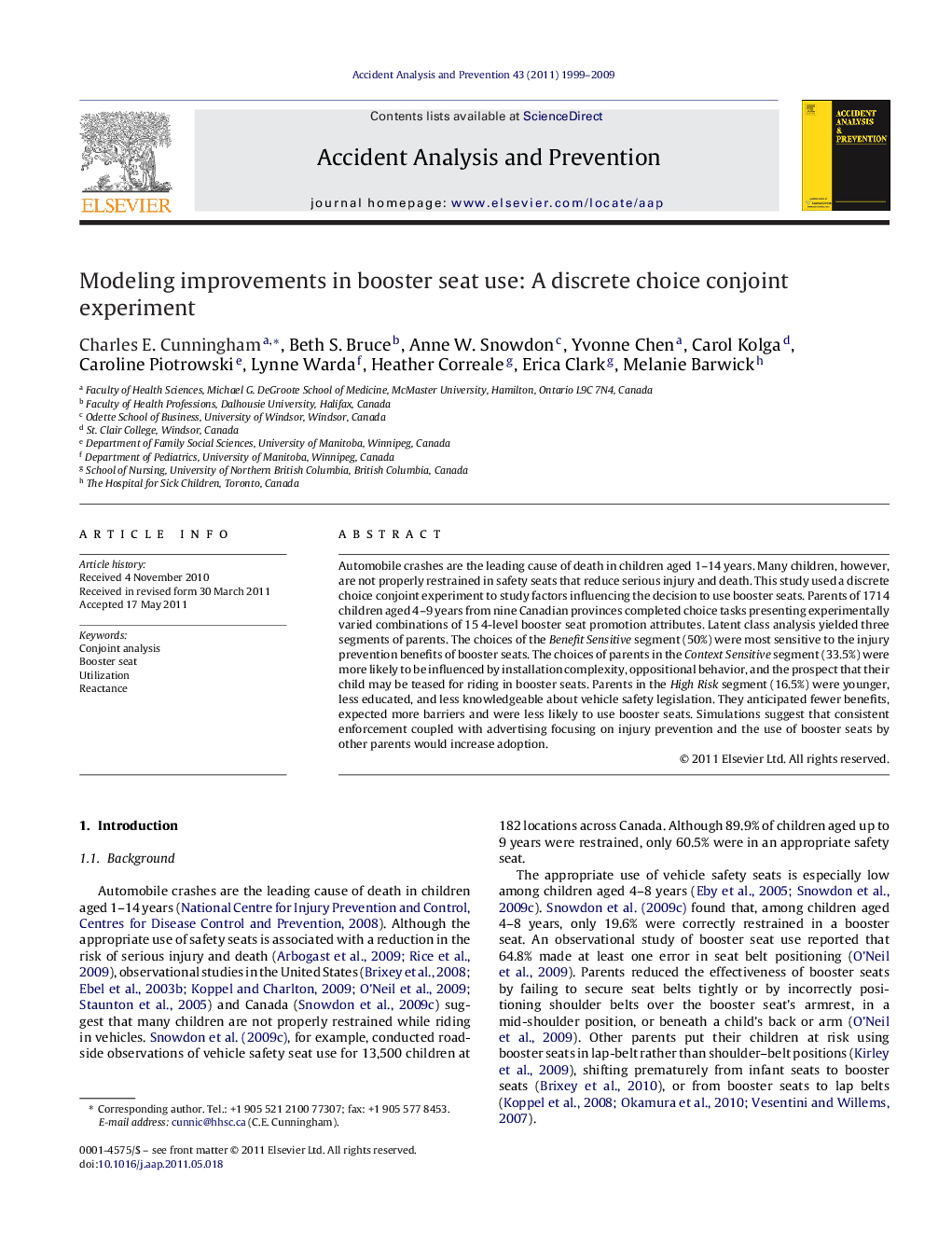| Article ID | Journal | Published Year | Pages | File Type |
|---|---|---|---|---|
| 572834 | Accident Analysis & Prevention | 2009 | 11 Pages |
Automobile crashes are the leading cause of death in children aged 1–14 years. Many children, however, are not properly restrained in safety seats that reduce serious injury and death. This study used a discrete choice conjoint experiment to study factors influencing the decision to use booster seats. Parents of 1714 children aged 4–9 years from nine Canadian provinces completed choice tasks presenting experimentally varied combinations of 15 4-level booster seat promotion attributes. Latent class analysis yielded three segments of parents. The choices of the Benefit Sensitive segment (50%) were most sensitive to the injury prevention benefits of booster seats. The choices of parents in the Context Sensitive segment (33.5%) were more likely to be influenced by installation complexity, oppositional behavior, and the prospect that their child may be teased for riding in booster seats. Parents in the High Risk segment (16.5%) were younger, less educated, and less knowledgeable about vehicle safety legislation. They anticipated fewer benefits, expected more barriers and were less likely to use booster seats. Simulations suggest that consistent enforcement coupled with advertising focusing on injury prevention and the use of booster seats by other parents would increase adoption.
► Injury prevention exerted a stronger influence on booster seat choices than other attributes. ► Provincial booster seat laws were associated with increased utilization. ► Consistent enforcement increased hypothetical utilization choices. ► Parental decisions were influenced by installation complexity, oppositional child behavior, and teasing by peers. ► The threat of severe consequences may elicit an unintended negative response (reactance) from high risk parents.
